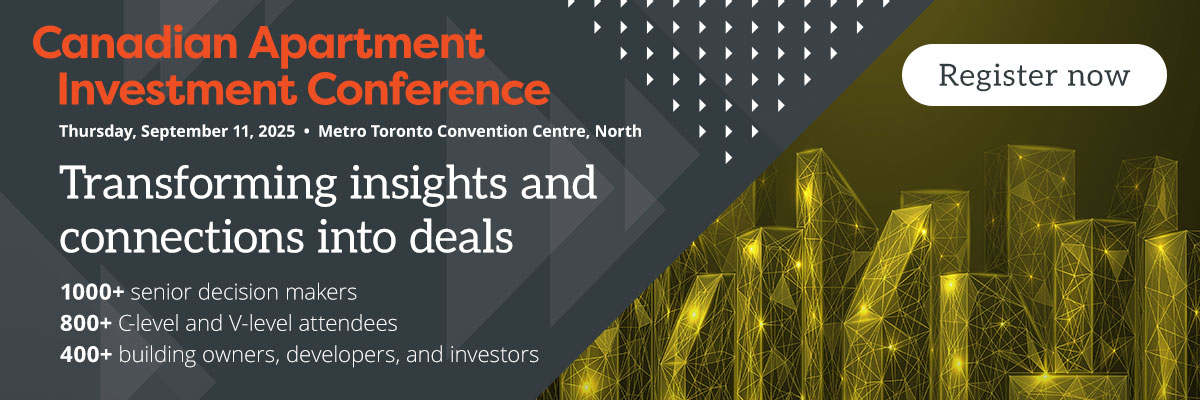Working towards net zero in Alberta, one building at a time

What does it take to reduce emissions in existing buildings? In this video, Dr. Jim Sandercock, Retrofit Coach with Alberta EcoTrust’s Retrofit Accelerator program, explains how deep retrofits can significantly improve energy performance in Alberta’s commercial and multi-unit residential buildings.
Want more information? Scroll down to learn more about the program.
Retrofitting large buildings could help Alberta’s progress toward a net-zero future
Eighty percent of Alberta’s large buildings predate 1990. Built when construction focused on cost-effectiveness and speed, they now account for 40-60% of carbon emissions in communities across the province.
But with plenty of useful life left, a huge opportunity exists to modernize the buildings, allowing the building owners to improve their building performance, address aging assets, improve asset value, and reduce operational costs for owners and tenants.
Enter the Alberta Ecotrust Retrofit Accelerator program, a free service offered by Alberta Ecotrust for building owners, managers, and stakeholders in the province to help them complete a deep retrofit of their assets.
The program, with its coaches, expert knowledge, and partnership network, guides building owners through deep retrofits, as Thivya Viswanathan, Program Specialist - Retrofit Accelerator Coach at Alberta Ecotrust, explains.
“For some building owners, the barrier to a successful retrofit is limited in-house knowledge or expertise. However, the primary obstacle is often securing financing and funding for the capital projects. In many cases, these groups may not see a clear justification for investing in a study to build a business case or to explore available funding options for the retrofit.”
“Our program provides one-on-one coaching to help identify what barriers exist and provide the resources to guide building owners through their retrofit journey.”
Full-scale support
The program works like this. Building owners gain free of charge access to a retrofit coach who guides them through the entire process.
The coach prepares a desktop analysis of the building portfolio to identify which ones are most suitable for retrofitting. This desktop analysis is complimentary and is available at no cost to the program participants. Expert consultants are then brought in to create a deep retrofit study following the desktop analysis. This includes a detailed plan of action and Alberta Ecotrust covers 50% of the cost. The retrofit coach acts as project manager, pairing the building owners with the engineering firms and consultants, and overseeing the successful implementation of the projects within the span of the program.
The program provides building owners with guidance on accessing financing for the project’s capital costs, including available grants.
Most existing buildings are eligible for a deep retrofit, including offices, retail spaces, and multi-unit residential buildings. Unlike a standard retrofit, the deep retrofit takes a holistic view of the building.
“It goes well beyond exchanging lightbulbs for more efficient ones or installing water flow mechanisms. It’s an approach that looks at all systems and components within the building, from windows and insulation to low-carbon heating sources and renewable energy, upgrading all or some to optimize energy performance,” says Viswanathan.
“Deep retrofit projects have the potential not only to lower greenhouse gas emissions but also to provide a lot of non-energy benefits, such as improving tenant or occupant comfort, which impacts leasing and tenant retention. They have the potential to lower a building's operational cost and increase the building's asset value. With leased properties, there is the added benefit of being able to deliver on the ESG goals of the tenants.”
Once projects have been identified through the deep retrofit study, they can be implemented right away, or can become part of the existing equipment or asset renewal processes. It’s important that all stakeholders are included in the process, adds Viswanathan:
“There are many situations in which we work with multiple stakeholders in the retrofit journey, an example being landlords and tenants. In those instances, we try to understand what the ownership structure looks like, and how tenants can be involved in the planning process. Some tenant impacts taken into account include split incentives in retrofit projects, affordability, comfort, indoor environmental quality, and disruptions caused by construction.”
Long-term gains
Collaboration is key to the success of the program, and Alberta Ecotrust partners with industry leaders such as the Southern Alberta Institute of Technology (SAIT), Alberta Energy Efficiency Alliance (AEEA), and the Pembina Institute to support the development of the deep retrofit industry in Alberta. “Through collaboration with our program participants and partners, we are also developing tools, resources, and case studies to help build knowledge and understanding of deep retrofit projects in Alberta and their practical application,” explains Viswanathan.
The ultimate goal of the program is to reduce emissions across the province by providing building owners with actionable deep retrofit plans.
“Our program aims to ensure that deep retrofits become more accessible, and that they become an ordinary part of building maintenance and equipment renewal processes.”
For more information, visit the Alberta Ecotrust website.
